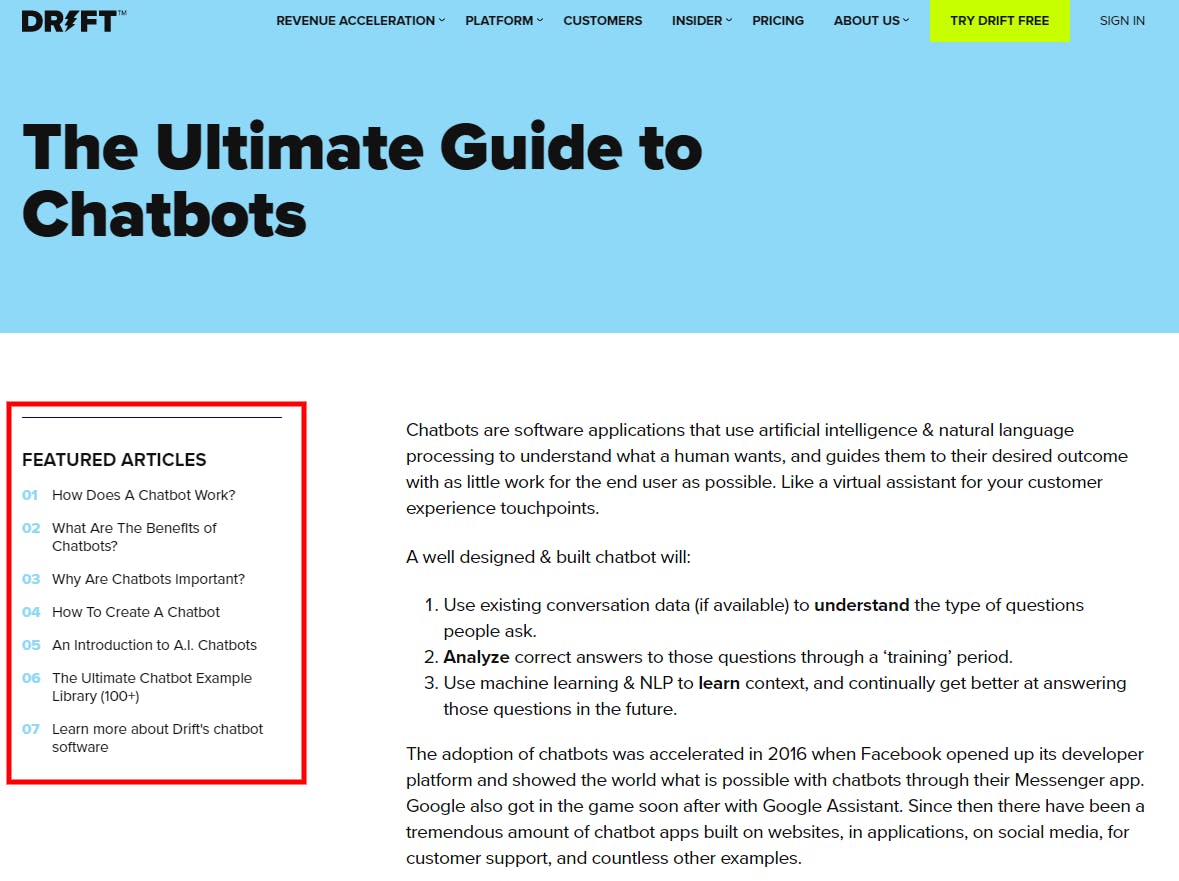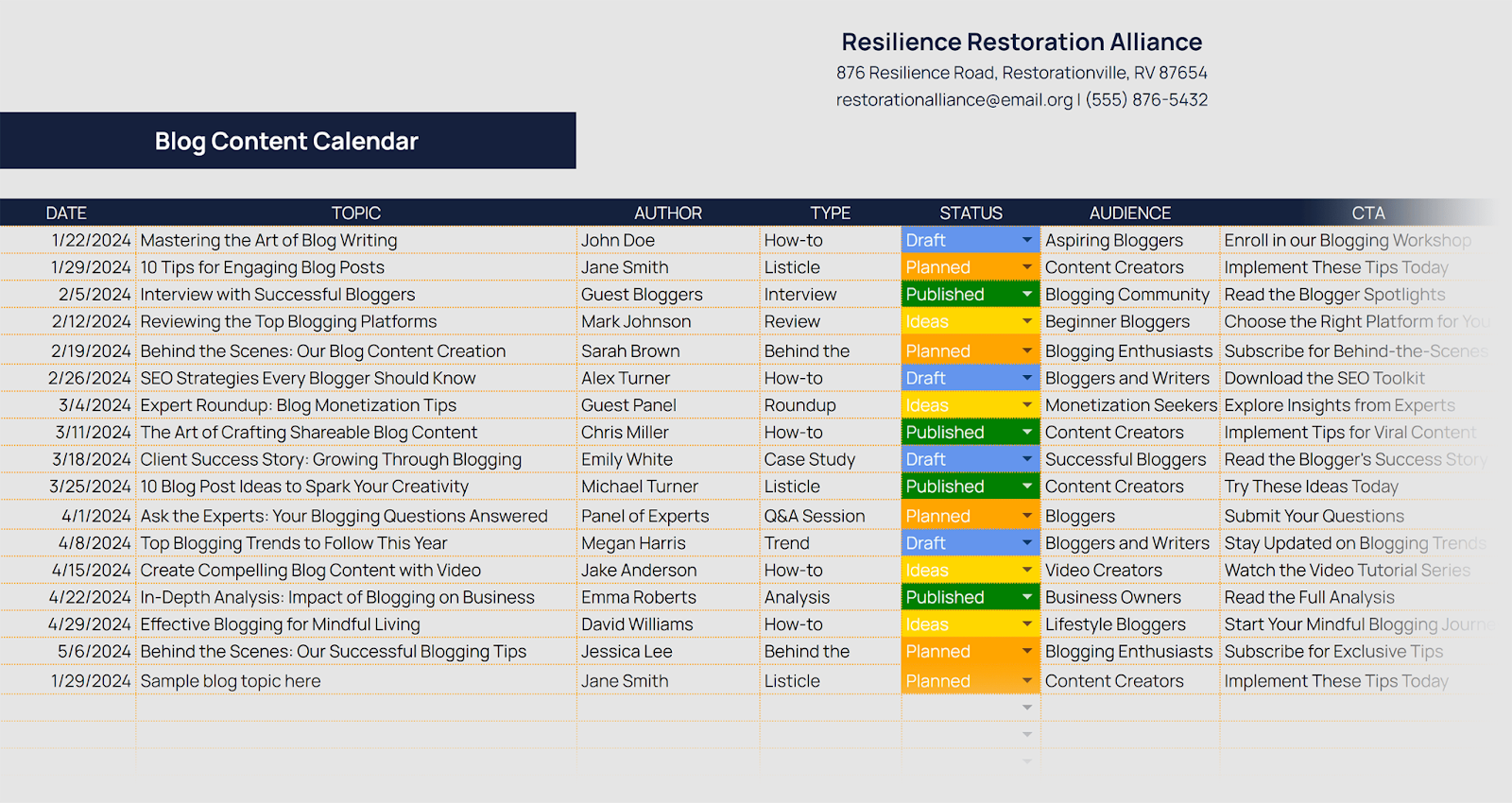Key takeaways
- A solid pillar and cluster setup helps you rank better, stay on top of your topics, and earn trust from both search engines and actual people.
- What matters most is having clear structure, being consistent, and writing stuff that’s actually helpful. Quality always wins.
- You don’t need a full-blown system to start. One pillar and a few clusters is enough, as long as you stick with it and keep tweaking.
Search engines don’t care if you post at random.
Google wants depth, not a pile of surface-level blogs on random topics.
People do too.
They’ll leave if your content feels thin or all over the place.
Google’s looking for signs you know your stuff.
That’s what topical authority is.
And you get there by building clusters of posts around one clear topic.
When your posts link together, your site looks smarter and more helpful.
This setup’s called the pillar cluster model.
You start with one big topic.
That’s your pillar.
Then you write smaller posts around it.
Each one hits a subtopic and links back.
That way, people can find answers without bouncing around.
And Google gets a clean view of what your site’s really about.
If your content’s still all over the place, this is your sign to sort it.
59% of B2C marketers say high-quality content is the most effective way to win at SEO.
So, pick a niche.
Go deep.
Make every post part of a bigger picture.
The 6-step pillar cluster content strategy behind high-ranking sites
#1 — pick a pillar topic that matters
Your pillar topic is the foundation of your entire content strategy.
It needs to be something your business can talk about for months.
Because you will need to do that.
The right topic does three things:
- It ties directly to what you sell or solve
- Covers topics that people are actively searching for
- You have real credibility or experience with it
Skip any one of those and the strategy falls apart.
Of course, you need to make it relevant to your business.
If the topic doesn’t move you closer to getting qualified leads, don’t bother.
First, you need to check for actual search demand.
Start by doing keyword research using tools like Ahrefs, Semrush, or even Google Search Console.
Look at keyword gaps, not just high-volume queries.
Search demand doesn’t have to be in the hundreds of thousands all the time.
But it has to be there.
Low-volume, high-intent is better than high-volume junk.
Google, and your audience, look for expertise.
So, don’t choose a topic you barely know just because it’s trending.
Start with something you already talk about with your clients.
Map what people are already searching for.
Look at what your competitors rank for.
Find out where you’re missing out.
“Marketing” is too broad, and you’re likely to get lost in the search results.
“B2B SaaS email onboarding flows” is more targeted, and definitely doable.
Go for depth, not breadth.
That’s how you become the go-to resource for your space.
#2 — build a cluster map before writing anything

Start with your cluster map on a spreadsheet or build out a topical authority map.
Write down your pillar topic at the top.
Then map out every angle, subtopic, and question tied to it.
Don’t open a doc and just start typing.
You’ll end up with messy content that overlaps or repeats itself.
See what people actually want to know.
Use tools like AnswerThePublic, Google’s “People also ask,” and Reddit forums.
If your pillar is “email onboarding,” your cluster could include:
- welcome email best practices
- open rate benchmarks
- common mistakes in SaaS onboarding
- how to write compelling subject lines
Also group ideas by themes so they don’t compete.
Space things out.
Do one post on strategy, one on copy, one on timing, one on examples.
That keeps the structure clean and focused.
It also helps when you’re planning internal links.
When each post naturally supports the others, it’s easier to link them.
It also makes it easier for Google to index your site and easier for people to find what they need.
So before you write anything, build the blueprint.
Use your framework for content that’s meant to last.
#3 — write the pillar page like it’s the homepage of your topic

Your pillar page is the main guide for the whole topic.
Don’t treat this like a simple blog post.
Think of it as the central hub that connects everything.
This page should explain what your topic is and why it matters.
Explain how to do it well and what mistakes to avoid.
Then it should link out to deeper posts.
Think of it as a “table of contents”… but with real value.
You’re giving people a full overview, not just sending them elsewhere.
It should have clear sections, strong headers, and easy navigation.
Internal links should be planned.
Make each one point to a useful post in the cluster.
The goal’s to make Google see this pillar post as the go-to page for that topic.
And soon enough, other people will too.
So make it useful before anything else.
Don’t stress out too much on how long, or short, it’ll be.
What matters is whether it answers the big questions clearly and completely.
#4 — write clusters consistently without burning out

You need a way to write that doesn’t wear you out.
The easiest fix is batch working.
Start by doing keyword research for 5–10 posts in one sitting.
Then outline them all at once.
Keep your outlines short, simple, and in bullet points.
After that, write one post at a time over the next couple of weeks.
This stops the constant context switching that kills your flow.
Set a steady pace.
If it’s easier, stick to the same structure for every post.
It saves time and makes your blog easier to follow.
But, each post should solve one problem or answer one question.
If your pillar is broad, use cluster posts to zoom in on one slice of it.
One might explain a tactic.
Another could break down common mistakes.
Focus on a single idea.
And don’t repeat what’s already in the pillar.
Just link back to it.
That keeps your writing sharp and your site tidy.
#5 — publish, link, promote, and update
Once a post is live, you’re not finished.
Every cluster post should link to the pillar.
And the pillar should link back.
This helps Google see the full picture and helps people get to what they need faster.
It also spreads trust across your whole site.
Missing those links early on is easy.
But fixing them later is a pain.
Use a checklist before you hit publish to make sure every link’s in place.
Then give the post a push.
Share it on social.
Email it.
Drop it in Slack groups.
Turn it into short posts or threads.
If no one sees it, it won’t help anyone.
Don’t count on it to market itself.
And once it’s out there, keep it fresh.
Update facts.
Add new tips.
Tweak your examples.
Do the same with the pillar if your cluster grows.
About 94% of all clicks go to organic search results.
This shows just how important good SEO content really is.
So stay updated and keep your content relevant to keep your rankings strong.
#6 — track results after 60 days and adjust as needed
Give it time before you call it.
Wait at least 60 days to see what’s really going on.
Your early wins will likely come from the cluster posts.
They’re more focused, so they rank and get clicks faster.
Pillar pages take longer.
But when they hit, they become your biggest asset.
Don’t just watch the rankings.
Look at how people are actually using the page.
Take note if visitors are sticking around, clicking through, and actually converting.
These are signs your structure’s doing its job.
Lower bounce rates and more clicks usually mean you’re on track.
Check your data and tweak where it makes sense.
Change up titles.
Add a few links.
Fix weak intros or clean up your CTAs.
You don’t need to rewrite the whole thing.
Just sharpen what’s there.
If your base is strong, the wins will build up over time.
This way, your growth starts to stack without needing to start from scratch.
Make pillar cluster content part of how you work
Don’t just write to look busy.
Write with a plan.
Make sure your posts actually work together.
When your site’s built around clear topics, people stay longer.
And Google trusts your site more because it looks complete.
The goal’s simple: make things clear for both people and search engines.
Even one strong pillar and a few solid cluster posts is a great start.
Each post should answer one thing, and link where it makes sense.
Stick to a pace that works for you.
One focused post a week is plenty.
Over time, that builds into a strong library that grows your site without draining you.
Track what you’ve done, what needs an update, and what’s next.
That small bit of planning helps you stay on track.
And staying on track is what brings real results.
This strategy isn’t flashy… but it works.
So start small.
Stay sharp.
Keep going.
The growth will come.


